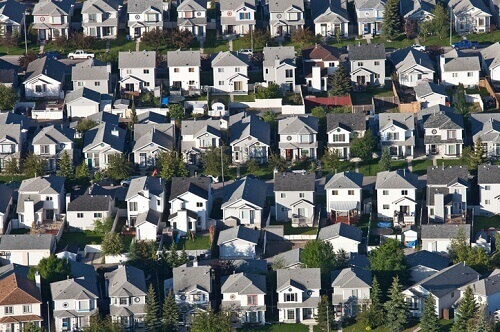But data reveals worse conditions in Ontario and the Prairie region

Canada’s core housing need stood at 12.7% in 2016, according to recently released figures from Canada Mortgage Housing Corp. (CMHC) and Statistics Canada. This represents some 1.7 million households, and has remains stable since 2006.
Core housing need signifies households not living in, and not able to access, acceptable housing, a joint statement from both organisations explained. It describes households living in dwellings considered inadequate in condition, not suitable in size, and unaffordable.
‘While the proportion of Canadian households living in core housing need has remained stable over the last ten years, different trends exist among provinces and territories," said Benjamin Williams, Director, Housing Indicators and Analytics.
"Between 2011 and 2016, housing conditions have worsened in the Prairies region and in Ontario, and improved in Quebec, British Columbia and in most of the Atlantic region. Core housing need was prevalent in the territories; the rate in Nunavut remained the highest in the country at 36.5%," he added.
In particular, unacceptable housing among Ontario households has significantly increased. Nearly 1 in 7 households there were in core housing need in 2016, an increase of 130,000 households in absolute numbers compared to 2011, reaching 15.3%,” the statement said.
B.C. has seen a drop in the figure since 2011, but it remains one of the highest in the country (14.9%). Meanwhile, Quebec saw the best improvement among all other provinces, as it brought the rate to a historical low of 9.0%, equivalent to more than 40,000 households compared to 2011.
Related stories:
CMHC responds to Ontario housing co-ops
Housing price anxiety knows no socio-economic class—study
Core housing need signifies households not living in, and not able to access, acceptable housing, a joint statement from both organisations explained. It describes households living in dwellings considered inadequate in condition, not suitable in size, and unaffordable.
‘While the proportion of Canadian households living in core housing need has remained stable over the last ten years, different trends exist among provinces and territories," said Benjamin Williams, Director, Housing Indicators and Analytics.
"Between 2011 and 2016, housing conditions have worsened in the Prairies region and in Ontario, and improved in Quebec, British Columbia and in most of the Atlantic region. Core housing need was prevalent in the territories; the rate in Nunavut remained the highest in the country at 36.5%," he added.
In particular, unacceptable housing among Ontario households has significantly increased. Nearly 1 in 7 households there were in core housing need in 2016, an increase of 130,000 households in absolute numbers compared to 2011, reaching 15.3%,” the statement said.
B.C. has seen a drop in the figure since 2011, but it remains one of the highest in the country (14.9%). Meanwhile, Quebec saw the best improvement among all other provinces, as it brought the rate to a historical low of 9.0%, equivalent to more than 40,000 households compared to 2011.
Related stories:
CMHC responds to Ontario housing co-ops
Housing price anxiety knows no socio-economic class—study



